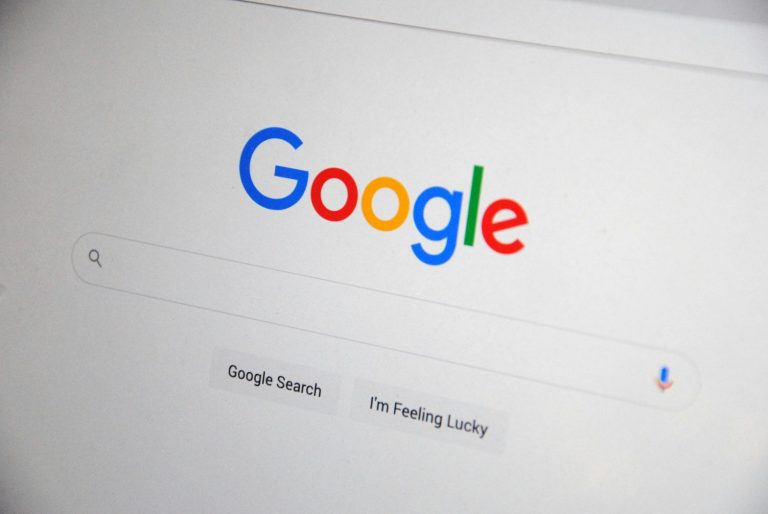One of the last things we want to happen when we are scrolling the internet is to come across an error code we don’t recognise. In fact, issues such as a 403 error can be detrimental in many ways for both users and those creating websites. Although the 403 forbidden error is less common than other types of online errors, it still needs to be addressed and fixed as soon as the problem arises.
What does '403 Forbidden' mean when trying to access a website?
Firstly, HTTP stands for HyperText Transfer Protocol and it can be defined as the network protocol used by the internet that allows users to open web page links and to go from one page to the next across search engines and other websites. It’s important to clarify that HTTP status codes pop up when you are connecting to a website with your browser.
When this happens, the web server responds with an HTTP header when you are successfully connected. However, there is a possibility that something can go wrong at this stage, and if it does, the server will generate and display different numbered HTTP status codes according to what issue is present. Although these numbers can be confusing, determining which exact one is being displayed is the key to knowing what precisely has went wrong.
Like many other common errors, the 403 forbidden error is an HTTP status code that a web server uses to communicate with your web browser. An http 403 error occurs when a web server prevents a user from gaining entry to a webpage they are trying to open in their browser.
If you are trying to access a site and you are confronted with a message that reads ‘error 403’ or ‘forbidden error’, it means that the server understands the request that is being made but you are not permitted to have access to the website. Although this error code can also crop up as ‘403 error’, ‘403 forbidden access’, ‘http 403’, http error 403, ‘status code 403’ and ‘access denied’, all of these messages have the same meaning.
Does ‘403 Forbidden’ mean I’m blocked?
If you are seeing a 403 forbidden message, it means that the website’s content you are trying to access is being blocked for some reason. While there are many justifications as to why this is happening, it is likely that it is the fault of the website owner or is something to do with the server.
In terms of how serious the 403 forbidden error message is, you shouldn’t worry too much if you come across it while scrolling or if it happens to your website. This message just means that the site is having difficulties with authorising your request to access files or specific pages.
What causes a ‘403 Forbidden’ error?
Although many people may commonly think that a 403 forbidden error is simply the result of too many failed login attempts, there are many reasons why you could be blocked from visiting a website. One reason why a 403 error occurs is because the content on the website has been marked as private.
This is when website creators deliberately obscure the information on their website to users. At times, this message may also pop up if the site is user restricted, meaning that only authenticated users can access the content. This could be the case with institutions such as colleges and libraries which may limit the amount of users accessing their content.
Other causes of this type of error are a corrupt .htaccess file or incorrect file permissions. When every file is created, they have certain default file permissions which allow the owner to read, write and edit them. If certain restrictions have been placed on files on a particular site, it is likely that you will be blocked from viewing them.
Moreover, it is also possible that you are seeing the error due to an issue with a plugin that you are using at the site. Of course, there is also always the possibility that your location also prevents you from accessing a certain website. This is determined by your IP address, which reveals where you are residing at the moment you are visiting the site. For example, your specific IP address could be flagged for spam or unwanted posts which has blocked you from accessing a site.
Can an IT firewall cause a 403 Forbidden error?
A firewall can be described as a device or software that denies or permits network traffic in accordance with security measures. The main purpose of a firewall is to protect a network from unauthorised access or cyber attacks.
Under the umbrella of firewalls, there are many different types, including packet filtering, stateful inspection, proxy and next-generation firewalls. Firewalls are crucial as they safeguard data and systems on websites as well avoid any virus attacks that threaten your devices or files. This is achieved by monitoring and filtering the network traffic based on security rules.
With regard to a 403 forbidden error, an IT firewall can cause this to happen if it decides to block access to the website. If a firewall has detected any breach of security including malware, it will prompt the generating of a 403 error code.
In many cases, clearing your cache may fix the problem. However, if clearing your cache still doesn’t solve the issue, there could be an underlying problem between the web server and your firewall which results in the 404 error code. If you have visited the webpage before and know that you can trust it, there is always the option to disable the firewall and restart the page to see if it works.
In order to revisit this page without problems in the future, it is a good idea to modify your firewall settings to permit access to this specific page. You can follow this process with multiple pages that have been blocked by a firewall. However, it is wise to exercise caution when doing this as your firewall could be protecting you from something potentially dangerous or damaging on that site.
How do I fix a ‘403 Forbidden’ error in Chrome?
If you have never encountered an HTTP status code before, it can be daunting when it pops up suddenly on your screen. Although many people get overwhelmed when they see a 404 error code preventing them from visiting a website, it isn’t a good idea to abandon the webpage completely or hope that the issue will simply resolve by itself. In fact, solving a 403 forbidden error is easier than it seems and it doesn’t mean that you are blocked from a site forever. Fortunately, it doesn’t take much to make sure a site is fully functioning again.
The first thing you should do if you encounter this kind of error is deactivate any browser extensions that are active on your device. On Google Chrome, extensions can be a great additive as they add a plethora of new features and functionality to the site. However, in many cases, you are unable to access a page because there are active plugins or add-ons such as ad blockers or proxy plugins that are thwarting entry to the site.
In order to disable extensions on Google Chrome, you will need to search and click on the ‘Extensions’ icon in the toolbar which will resemble a puzzle piece from a jigsaw. You can open the main menu by clicking the three dots button and select ‘More>Extensions’. When a menu pops up, click ‘Manage Extensions’. In the ‘Extensions’ tab that pops up, find the name of the certain extension that you want to uninstall and click the ‘Remove’ button.
Doing this will remove the extension from Chrome and you will not be able to use it any more. At this stage, it may ask you if you are sure that you want to remove the extension and if you are, you should click ‘Remove’ again. If you need to reinstall the extension you removed, you will need to visit the Google Chrome Web Store to download it again.
Furthermore, to simply disable the extension, you will need to click the virtual switch beside the name of the extension to turn it off. Remember that you can always enable it again when you want by flipping the switch again. Once you have disabled the extensions, refresh the page and attempt to access the URL again. If you can now gain access to the website, you may have to keep your extensions disabled while you are on the site. If it hasn’t worked, you will need to consider other possible reasons as to why you cannot reach the site.
Another reason why a 404 error code could pop up is because of your cache. A cache is a hardware or software component that stores data to accommodate quicker requests for that data in the future. Cached data includes multimedia such as images, files and scripts which are automatically saved on a device from the first time someone opens an application or visits a website. If you have tried everything else, you may need to clear your browser cache to see if the issue persists. Clearing your cache will also get rid of your cookies which are put in place to store user choices such as browsing sessions to track user preferences.
On Google Chrome, you can clear your cache and cookies by clicking on the three-dot icon on the top right corner and selecting ‘Settings’. You will then need to find the ‘Privacy’ and ‘Security’ section and click ‘Clear browsing data’. Use the drop-down menu to select the time frame for data deletion and then check the ‘Cookies and other site data’ and ‘Cached images and files’ options. Then, click ‘Clear data’ which will then proceed to clear your cookies and cached data.
Once you have followed the appropriate steps, revisit the website and see if the error has stopped coming up. Even if you clear your cache and it doesn’t resolve the 403 error, it still has its perks in terms of improving your overall internet speed. If this solution does not work, it may be necessary to visit the support team who will help you with the issue first-hand.
Another simple explanation for why you are coming across this error code is because you have mistyped a URL. When we are in a hurry to visit a website or we are distracted, it can be easy to miss a letter or two, which is why it is necessary to check that you typing the correct URL. If you have found that you have input the wrong URL, simply retype the URL and this should fix the issue.
If you have exhausted every avenue when trying to solve this 403 error, it may be time to get in touch with the people responsible for the running of the website. This can be useful for the company if it is unaware of the issue and you may help other people who are experiencing the same problem. If multiple people are seeing this error message it, take time away from trying to access the site instead of frantically refreshing the page as this will make you more frustrated.
If it is only you who is experiencing this problem and you have tried every other solution, it may be time to contact your internet service provider as your IP address could be blocked. Although this is a rare occurrence, it may be worth considering getting in contact with them to see if this is the case. Of course, if you use a VPN, it may also be worthwhile to disable it and reload the page as some sites restrict access through a VPN.
Interested in finding out more?
For specialist support dealing with HTTP errors such as error 403, don’t hesitate to make contact with Aqueous Digital today. Our professional team is dedicated to offering a range of SEO and marketing services, from reputation management to content strategy.
So, don’t let error codes negatively impact your SEO efforts by reaching out to our SEO team who will help you on the path to success no matter what it takes.
Further reading on SEO
Why pillar pages are the foundations of a successful content strategy
How to conduct a thorough digital marketing audit of your website
Why digital marketing is important to business owners
Digital marketing trends to get ahead of the curve
Short-form vs. long-form content: Which is better for your website?
Digital marketing channels: Which one should you choose?
Content Optimisation: How to improve existing content on your website
How AI is becoming more prominent in digital marketing
How to create a results-driven digital marketing campaign
SEO for YouTube: How to optimise YouTube videos for search
How to boost your website’s domain authority
What is Evergreen Content and why does it matter for SEO?
Why we build backlinks to your website
How to develop a content strategy for SEO
Content is King. What is content marketing?
Creating great content: How to write for SEO
How digital marketing has changed over the years
How video content can elevate your website
Top 20 Facts about Manchester You Never Knew
Aqueous Digital’s Ultimate Guide to the cost of SEO in the UK
Aqueous Digital’s Guide to the Top 501 SEO and Digital Marketing Terms
How video content can elevate your business





